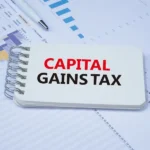At a Glance:
- Creditworthiness and revenue stability are key financial criteria landlords look for in potential tenants.
- Essential documents include the income statement, balance sheet, cash flow statement, and tax returns.
- Financial transparency builds trust, enhances negotiation power, and mitigates risks for both parties.
Securing a good commercial lease is necessary for any business. It involves various financial considerations that both the tenant and landlord must carefully evaluate. This article delves into the basic financial criteria landlords look for, the key documents and financial statements required, and the importance of financial transparency in the leasing process.
Basic Financial Criteria Landlords Look For
Creditworthiness
Landlords prioritise tenants with a strong credit history. A good credit score demonstrates reliability and the ability to meet financial obligations. Typically, landlords look for a credit score of 650 or higher. You can assess your credit score using platforms like Moneysmart. Businesses with a strong credit rating are more likely to secure favourable lease terms.
Revenue Stability
Consistent revenue streams are a key indicator of a business’s financial health. Landlords prefer tenants with stable and predictable revenue patterns, as this reduces the risk of missed rental payments. A history of steady revenue growth also adds to the tenant’s attractiveness.
Debt-to-Income Ratio
Another crucial metric is a business’s debt-to-income ratio. This ratio shows the portion of a company’s earnings used to pay off its debt. A lower ratio suggests a business has more disposable income to cover rent, making it a more appealing tenant. Typically, a debt-to-income ratio below 50% is considered favourable.
Liquidity
Liquidity is a business’s capacity to fulfil its short-term liabilities. Landlords often assess liquidity through quick ratio and current ratio metrics. A higher ratio indicates better financial health, implying that the business can comfortably handle rent payments even during economic downturns.
Key Documents and Financial Statements Required

Income Statement
The income statement details a company’s revenues, expenses, and profits for a given period. It offers insights into the business’s profitability and operational performance. Landlords use this document to assess whether the tenant can sustainably afford the lease payments.
Balance Sheet
A balance sheet outlines a company’s financial information, including assets, liabilities, and shareholders’ equity, for a certain period. It offers a snapshot of the business’s financial position, revealing its net worth and economic stability. Landlords scrutinise the balance sheet to gauge the business’s overall financial health.
Cash Flow Statement
The cash flow statement is necessary to track cash inflow and outflow within the business. It highlights the company’s liquidity by showing how money is generated and used. This document is crucial for landlords to understand how effectively a business manages its cash resources, ensuring that it can meet rental obligations.
Tax Returns
Business tax returns from the past few years provide a comprehensive view of the company’s financial performance and tax compliance. They serve as an additional verification tool, reinforcing the financial data presented in other statements. Landlords may request up to three years of tax returns to ensure consistency and reliability.
Importance of Financial Transparency
Building Trust
Financial transparency is vital in fostering trust between commercial property landlords and tenants. Open and honest communication about financial health can prevent misunderstandings and build a strong, collaborative relationship. Transparency ensures that both landlords and tenants have a clear understanding of what to expect regarding their financial expectations and responsibilities.
Enhancing Negotiation Power
Being transparent about financial conditions can enhance a tenant’s negotiation power. When landlords see clear, well-organised financial documents, they are more likely to offer favourable lease terms. This transparency demonstrates professionalism and preparedness, which can lead to more advantageous lease agreements.
Mitigating Risks
Financial transparency helps mitigate risks for both parties. For landlords, financial transparency helps to reduce the risk of tenant default by ensuring they lease to financially stable businesses. For tenants, it ensures they understand their financial commitments and can plan accordingly, reducing the risk of financial strain during the lease term.
Understanding the financial requirements for a commercial property lease is crucial for both tenants and landlords. By focusing on key financial criteria, preparing essential documents, and maintaining financial transparency, businesses can secure favourable lease terms and build strong, trusting relationships with their landlords.











